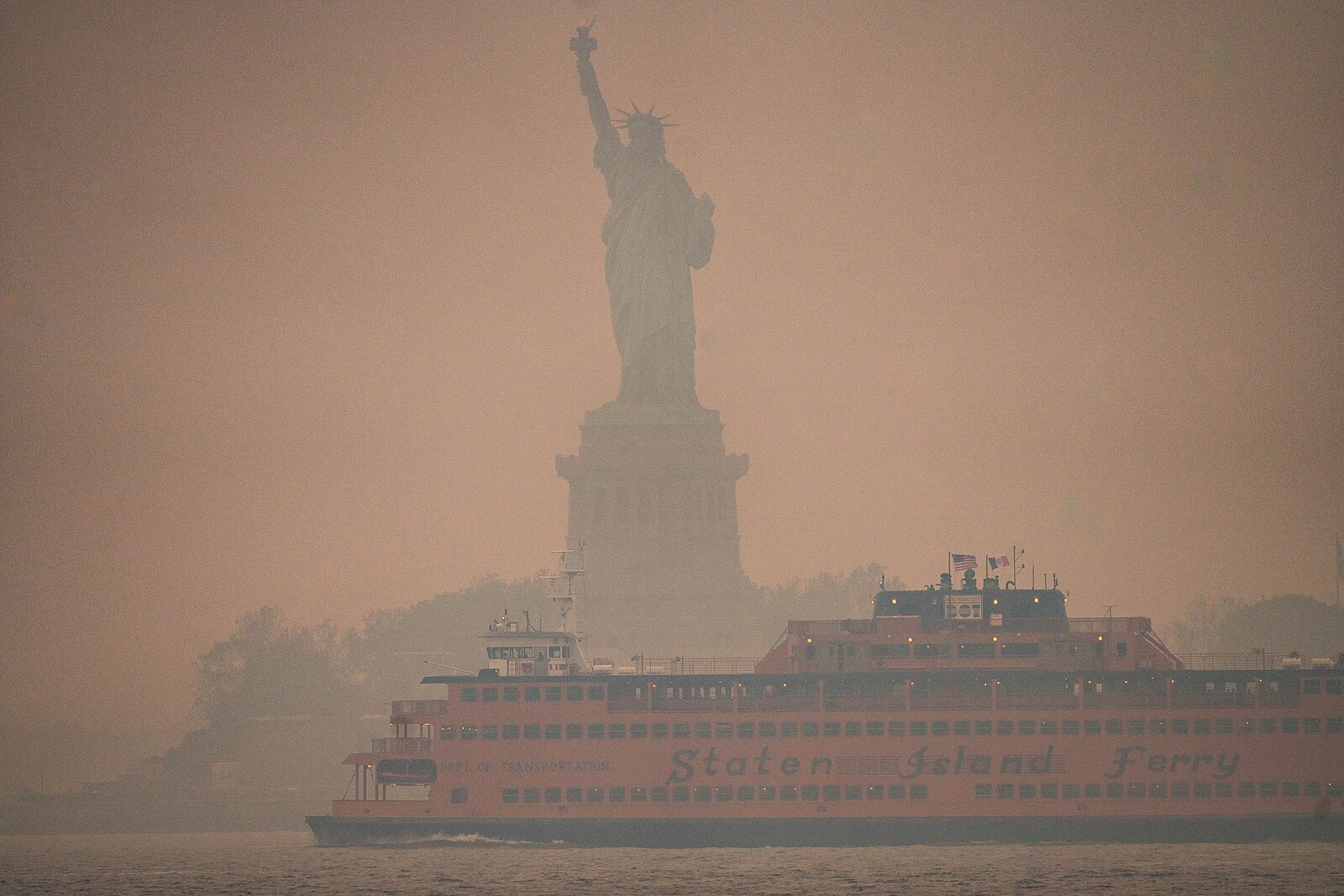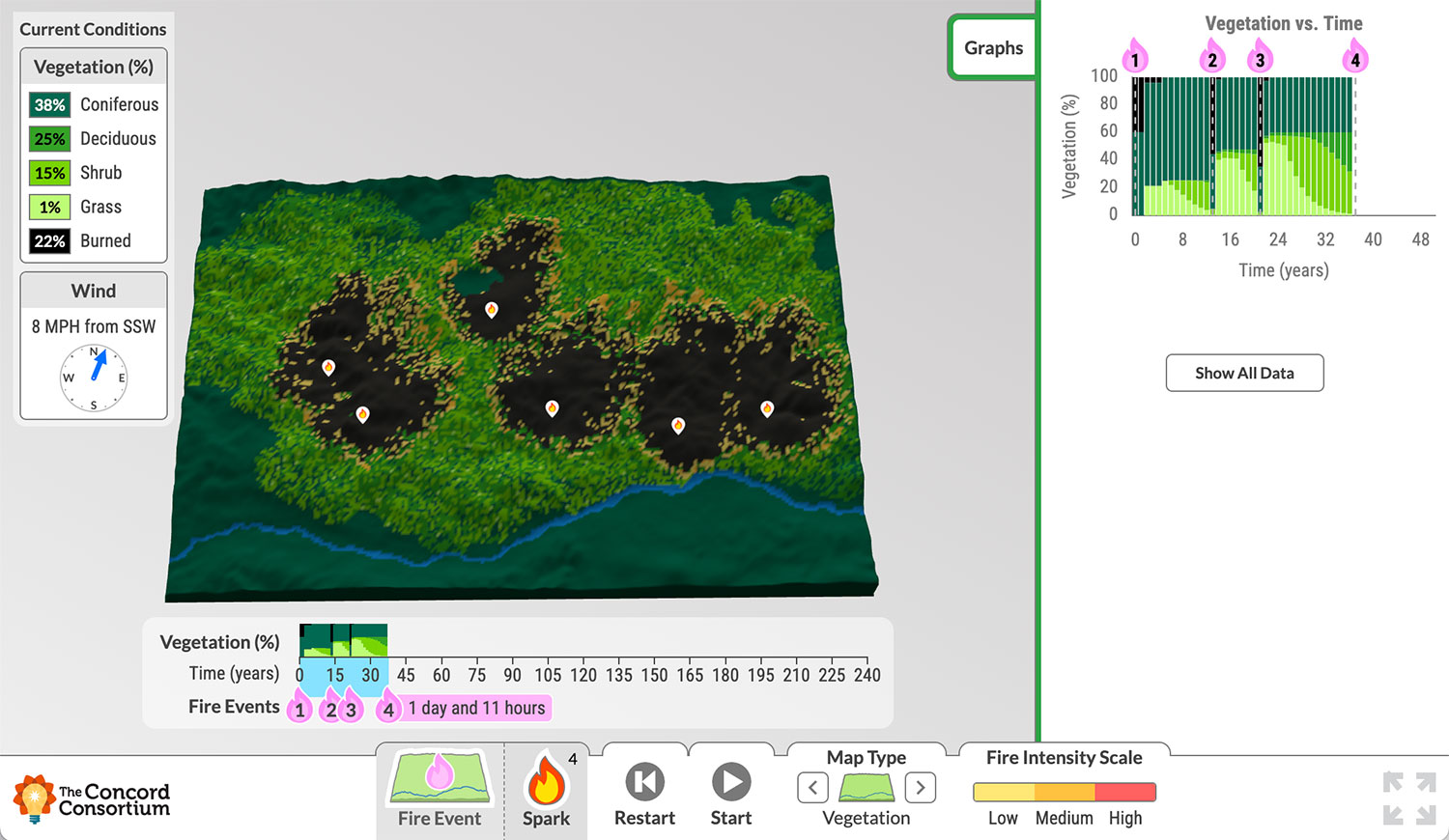Last summer, thick plumes of wildfire smoke from northern Canada blanketed cities as far south as Washington, D.C., in an eerie orange haze. Record-breaking wildfires in provinces across Canada resulted in catastrophic damage to homes and communities, the destruction of more than 45.7 million acres of forest, and dangerously unhealthy air quality throughout the Northeast and Midwest United States.

Wildfire smoke from Quebec Canada over New Jersey and New York City on June 7, 2023. Original photo by Anthony Quintano, CC BY 2.0.
Many of these fires burned through an important ecosystem called the boreal forest, which exists only in the northern hemisphere’s Arctic and sub-Arctic regions and stores an enormous amount of carbon both above and below the surface. Wildfires are not a new phenomenon in this region. Boreal forests have experienced regular wildfires throughout history. In fact, many of the conifer trees that inhabit this ecosystem rely on periodic wildfires to open their cones, revealing the seeds that will produce the next generation.
Boreal forests include a tremendous amount of vegetation, and the layers of peat that form at the forest floor produce significant smoke when burned. Furthermore, frequent fires increase the thawing of the permafrost layer by removing the insulating vegetation cover on the forest floor. This exposes long-frozen organic matter, encouraging decomposition that releases additional carbon into the atmosphere.
Black carbon particles moved across eastern portions of Canada and the U.S. from June 3–8, 2023. NASA Earth Observatory video by Lauren Dauphin.
Wildfires are becoming more common and intense due to a warmer and drier climate. The increase in the frequency and extent of fires is threatening the resilience of the boreal forest ecosystem and changing the usual pattern of forest succession in ways that are yet to be fully understood. Forest succession describes the patterns in which forest that has been cleared through burning, cutting, or other means returns to its initial state. Repeated fires in the same area can have a substantial effect on the types of vegetation that grow back. In turn, this change can substantially affect the animals that rely on a diet of plants and trees.
Boreal Forest Fire Explorer
The Concord Consortium is excited to contribute to a new National Science Foundation-funded scientific research grant focused on this region. Led by scientists Brian Buma at the University of Colorado Boulder and Philip Higuera at the University of Montana, the project is studying the past, present, and future of boreal wildfire feedback loops.
We will collaborate with these scientists to produce a new version of our existing Wildfire Explorer model developed by our GeoHazard project. Our new Boreal Forest Fire Explorer will include some of the boreal forest-specific parameters that scientists are investigating in the field. The simulation will allow students to explore the regrowth rates of vegetation endemic to the ecosystem (e.g., deciduous vs. coniferous trees) over time and investigate regrowth after multiple fire events in close succession. Students will be able to start wildfires in a boreal forest landscape, view the extent of each burn, and monitor a graph that displays the total amount of carbon in the simulation.

The Boreal Forest Fire Explorer allows students to create multiple fire events in close succession. The graph shows the change in the type of vegetation that regrows after each event.
Research goals
Scientists have announced that 2023 was the hottest year on record. The new research project aims to understand what this means for boreal forests.
The primary research goal is to investigate Arctic ecosystem change over time. Specifically, scientists seek to identify thresholds in both climate and vegetation that govern boreal forest resilience and fire behavior in a warming climate. This information will be used to develop scenarios for future change based on state-of-the-art fire modeling experiments informed by both paleo and modern records of climate and vegetation. This research will also allow scientists to both identify past and anticipate future feedbacks between increasing fire activity and post-fire vegetation in Arctic and boreal ecosystems. This work will be transformative for fire-climate modeling and for on-the-ground forest and wildfire management.
The Concord Consortium will help translate scientific research into resources educators and students worldwide can use to understand the implications for the planet. The scientifically valid and easy-to-use Boreal Forest Fire Explorer will allow users to investigate the factors that influence wildfires in this important ecosystem. The simulation will be embedded in a new online activity, designed to teach students about the cycle of boreal forest fires, forest succession, and regrowth under different climate change scenarios. Teacher support materials will complement the activity.
Interested in joining our pilot study?
We will pilot the “What is the Future of Forest Fires?” activity in classrooms across the U.S. and collect feedback from both teachers and students. The final version of the activity will be made available for free.
If you are interested in piloting the forest fire activity in the spring, please complete this application. Accepted teachers will be notified by March 1, 2024.